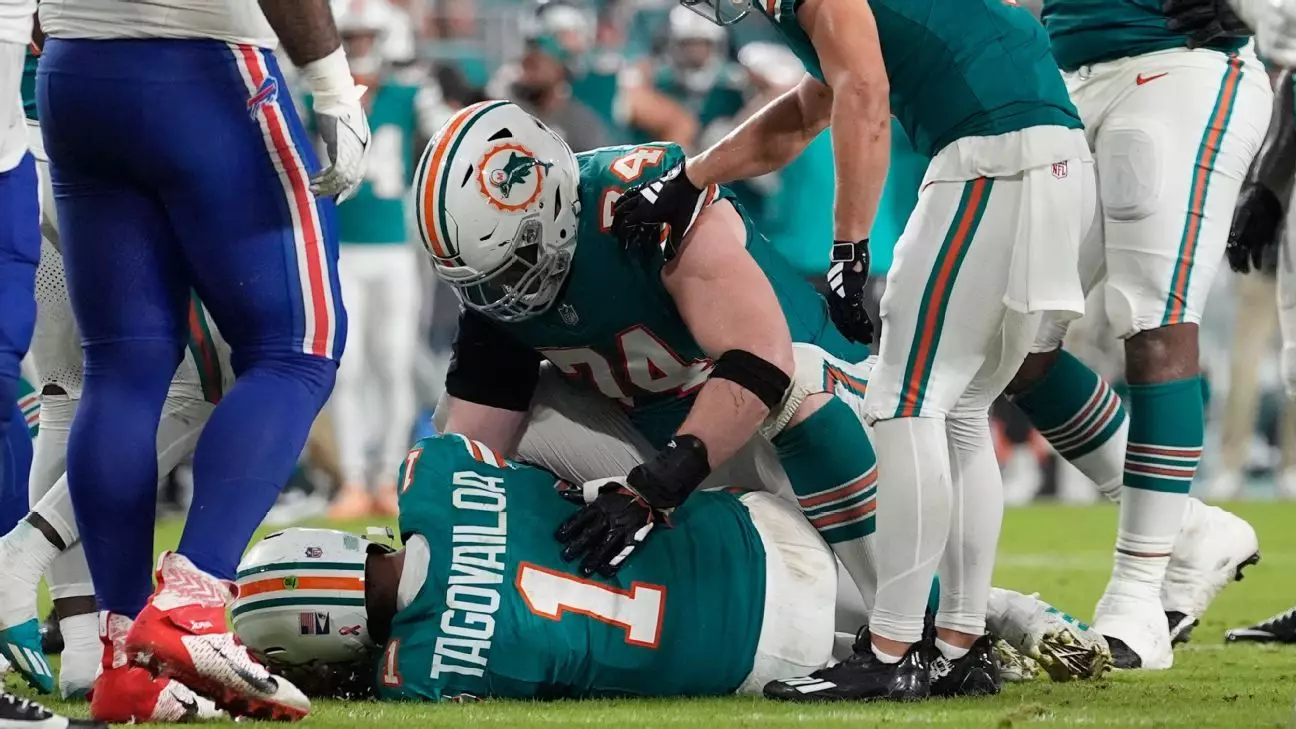The NFL is in a continuous battle to address player safety, particularly when it comes to concussions. Recent statements from league officials reveal insights into both the ongoing challenges and the successes in lowering concussion rates among players. Despite the announcement of a record low in preseason concussions, significant questions remain regarding the league’s approach to managing high-profile concussion cases, such as that of Miami Dolphins quarterback Tua Tagovailoa. This article will dissect the nuances of these developments, emphasizing the importance of player autonomy and the complexities of concussion management.
For the first time since the NFL began tracking preseason concussions in 2015, the league recorded a mere 44 reported concussions this past preseason, marking a significant 25% decrease from the previous year. This decline is noteworthy, especially in the context of 2017, when reported concussions soared to 91 during the same period. Key figures within the NFL, such as Chief Medical Officer Dr. Allen Sills, attribute this positive trend to multiple strategies. Modified practice schedules, new safety protocols, and equipment innovations like the Guardian Caps helmet have all played critical roles in reducing injury rates.
The Guardian Caps, designed to absorb impact and reduce the severity of hits, have been touted as particularly effective. These helmets must be worn by all players during practice, excluding quarterbacks and specialists, and they appear to have contributed significantly to the lower incidence of concussions. The gradual incorporation of these helmets into everyday training routines demonstrates the NFL’s commitment to evolving its player safety measures.
However, while the statistics paint an encouraging picture, the reality of concussion management remains fraught with uncertainty and individual variability.
The ongoing situation of Tua Tagovailoa underscores the complexities surrounding concussion management within the league. After suffering a third concussion early in the season, Tagovailoa’s status remains uncertain as he seeks expert medical opinions across the country. The NFL has made it clear that it views player autonomy as paramount in determining return-to-play decisions; however, this perspective raises important questions about accountability and protocol effectiveness.
Dr. Sills emphasized the importance of patient autonomy, stating that decisions must be informed by thorough discussions between players and medical experts. This approach recognizes that each athlete’s experience with concussions is unique, shaped by factors such as the number of past concussions, recovery time, and individual health information. Nevertheless, the lack of a standardized formula for predicting future risks continues to frustrate players, teams, and fans alike. The absence of concrete predictions about long-term health outcomes serves as a stark reminder of the uncertainties inherent in concussion management.
As medical professionals navigate these decisions, they are often left to make informed estimates based on a patient’s history and current condition — a process that may inadvertently leave players feeling vulnerable and uncertain about their futures.
While the drop in concussion rates this preseason is promising, it is essential to acknowledge that the fight against head injuries in football is far from over. The NFL has successfully introduced various measures to enhance player safety, yet the question persists: will these efforts prove sufficient in the long run?
The league’s commitment to ongoing research and development in safety protocols is commendable, but sustaining progress will require consistent monitoring and adaptation. Players‘ health will forever be a priority, and as the league looks ahead, it must remain vigilant against complacency. As new technologies and methodologies emerge, the NFL should continue to refine its strategies to protect its athletes.
Moreover, fostering a culture where players feel empowered to voice their concerns about health and safety is crucial. While professional athletes are known for their resilience, it is vital to emphasize the importance of mental well-being alongside physical health. Encouraging open dialogues about injuries — particularly concussions — can lead to enhanced care and understanding, ultimately helping players make informed decisions about their futures.
While the NFL has achieved notable progress in lowering preseason concussions, the league must remain focused on managing individual cases like that of Tua Tagovailoa. Player autonomy, effective safety measures, and ongoing research should all converge to create a sustainable model for the future of football — one where the health and safety of players are prioritized above all else.


Napsat komentář